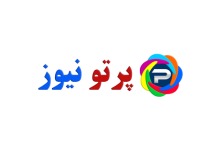Reducing the production of animal feed in factories to less than 7 million tons / exporting 29 thousand tons of aquatic feed until January 1401

According to the economy reporter of Fars news agency, today Majid Jafari stated in a press conference that the production capacity of ready-made animal feed in the country is high, but the factories are working at 30-40% of their capacity, he said: Recently, the production of the factories has decreased to 7 million tons and it should be The use of animal feed by livestock farmers should be cultured.
The CEO of the Union of Animal Feed Cooperatives of the country, stating that ready-made animal feed plays a very important role in increasing the productivity and health of livestock production, stated: Unfortunately, in the past years, due to the fact that the profit margins of poultry farmers and livestock farmers have decreased day by day, they prefer to use the devices themselves. They should put a small one in the production areas and prepare animal feed, which although it is somewhat cheap for them, but it is debatable from the point of view of health, while the productivity of their production will also decrease.
According to Fars; Animal feed factories import raw inputs and formulate them according to international standards. There are global controls for these standards. Recently, it has been decided that if these factories want to export, they must have an IR code. This is a complicated process, but it shows the high quality production of the factories. If producers use these feeds, their production will be productive.
Jafari emphasized: The government has also banned the export of animal feed, while there is a very suitable market in the surrounding countries for 300 to 400 million people.
According to Jafari, there are 852 animal feed factories in the country that can produce 25 million tons of ready-made feed in one shift. This is while their production has reached less than 7 million tons in the last year.
In response to the Fars reporter’s question, what was the reason for the decrease in production, he said: After the removal of the currency of 4200 tomans per capita, people’s consumption in the chicken and meat sector has decreased a lot, and this has caused the demand for animal feed to decrease. In addition, because the producers’ profit margin has been reduced to a minimum, poultry farmers and livestock farmers do not want to use ready-made animal feed, which is slightly more expensive than raw feed, but in return it is of better quality and health.
He also mentioned the export ban as a factor for reducing production and said: The government had banned the export of such products at the time of allocating 4200 Tomans currency, and this reduced the activity of factory owners.
The CEO of the Union of Animal Feed Cooperatives of the country stated: After removing the currency of 4200 Tomans, the minister promised to export feed, but practically no feed has been exported in the last 8 months.
In response to Fars reporter’s question, what is the main problem of export, Jafari said: The problem is administrative bureaucracies, factories are supposed to get IR code (optimal production standards), but veterinary medicine delivers it with a one-year process, and it is expensive. So far, 15 factories have received an IR code.
Jafari said: In the last meeting, we have proposed to allow countries that do not want us to issue IR codes to them, but we have not heard a response yet.
* Export of 29 thousand tons of aquatic feed until January 1401
In this meeting, Arslan Ghasemi, the head of the Agriculture and Food Industry Commission of the Iran Cooperation Chamber, emphasized that last year, according to the customs statistics, 28 thousand tons of aquatic feed worth 11 million dollars were exported, and this figure increased to 29 thousand tons by January of this year. And the value has increased to 21 million dollars.
The head of the Agriculture and Food Industry Commission of Iran Cooperative Chamber stated that there is a very good market in the surrounding countries and clarified: the export of livestock and poultry feed should be freed because there are both export markets in the surrounding countries and the advantages of domestic production due to There is science and technology, energy and cheap manpower.
Stating that our target for exports is 100 million dollars, Ghasemi said: “The government should provide the necessary support for exporters, the same as other countries such as Turkey do in this regard.”
He added: Cheap facilities were supposed to be given to the factories, but this was not done. Currently, 25% of the profits of the factories are spent on taxes, but the poultry farmers are exempted from this tax. The cost of energy is cheaper for them than the factories, and all this has caused the livestock farmers and poultry farmers to produce ready-made feed at their production sites, and in fact, the government’s policy is in a way that pushes them in this direction instead of buying from the factories.
In the continuation of this meeting, Mehdi Masoudi, the Secretary of the Agriculture and Food Industry Commission of the Iran Chamber, mentioned the holding of the 7th FEDEXPO exhibition (an international conference and side exhibition of Iran’s livestock, poultry and aquatic feed) and said: about 80 companies are present in this exhibition, of which 13 Up to 14 foreign companies will be represented. Foreign experts including New Zealand and England also participate in this exhibition. The motto of this exhibition is “healthy food, healthy environment, healthy people” and we are trying to have expert interaction with the participating countries and also do marketing in other countries.
Pointing out that the country is 90% dependent on the supply of poultry inputs, he said: the use of ready-made animal feed will help reduce consumption, production efficiency and the health of food products.
This exhibition will be held from Tuesday of this week in Bostan Diavogu.
end of message/
You can edit this article
Suggest this article for the first page

